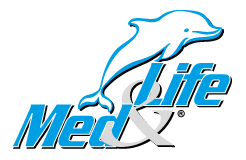Magnetostimulation by Viofor JPS and restitution after loading
Keywords:
Viofor JPS, magnetostimulation, restitution, lactic acid concentration
Summary:
The possibilities of traditional methods to help restitution in top sport are limited. Now there are new, alternative methods (acupuncture, magnetostimulation, cryotherapy), but only few scientific studies about the effectiveness of these methods are known. We measured the effectiveness of magnetostimulation in restitution by a Viofor JPS equipment on ergometric Hungarian kayak championships in 2006 and 2007. In both experiments 3-3 groups of 5 took part each including 2 women and 3 men. We measured the time of 1000 meters paddling as a performance. The members of the first group were stimulated by magnetic field (+) immediately after paddling. The second group was stimulated by the „placebo” function of this equipment (pl), the third group was not treated at all (-). We measured the lactic acid concentration before paddling (Tny), immediately after loading (Tmax), and 5 and 60 minutes after paddling (R5 and R60). In 2006 the magnetostimulation was performed by M3P2I3, in 2007 by M2P2I2 programme of Viofor JPS. We used average values in both cases, the conclusions were drawn on comparing the average data of the groups. The results showed that the restitution of the lactic acid concentration was faster in the groups treated by magnetostimulation. The M2P2I2 programme proved to be quicker than M3P2I3. In the group, exposed by this programme we observed the degradation of the lactic acid concentration as soon as 5 minutes later (in the rest of the groups the concentration increased) and after 60 minutes the level was only 143 % of the normal level (in the rest of the groups more than 200 %). According to our experience the M2P2I2 programme is more effective to make the restitution quicker. On the basic of our data the magnetostimulation with Viofor JPS may be more appropriate to reach faster restitution. It is necessary to perform the same measurements in larger groups of athletes and to choose the optimal programme from the available ones.
Authors:
Dobos J., Győré S., Szucs A.

